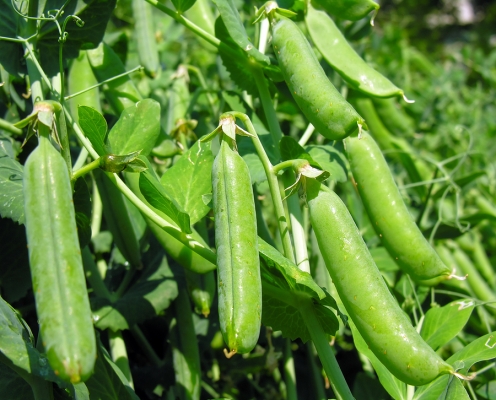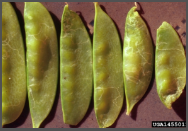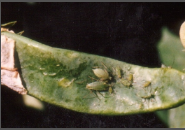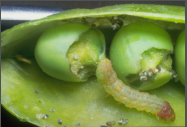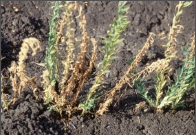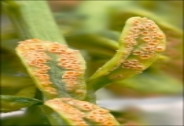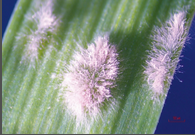Early varieties:
Arkal: Dwarf, wrinkled deep green color seeds and is suitable for growing in all states. It contains 8-9 grains in single legume. To obtain high yield, farming is done in first fortnight of September. It gives an average yield of 21-25quintal/acre.
V.L.7: Dwarf, wrinkled seeds, light green in color and single legume contains 6-8 grains. It gives an average yield of 21-25quintal/acre.
Matar Ageta: Developed by PAU, Ludhiana Dwarf variety, good for seed production. Seeds are smooth and of green color. It gives yield of 24quintal/acre.
Main varieties:
Punjab 89: It is a high yielding variety which is long in height and has attractive and shiny legumes (10-12cm long) and single legume contains 9-12 grains. It is a medium maturity sweet fruit variety. It gives an average yield of 57quintal/acre.
Palam Priya (D.P.P. 68): It is a high yielding variety. The variety is resistant to powdery mildew. It gives an average yield of 50-54quintal/acre.
Bonvila: Medium height, wrinkled seeds, suitable for all regions, light green color and legumes contains 7-8 seeds. It gives an average yield of 40-50quintal/acre.
V.L.3: Medium height, wrinkled seeds, suitable for low and intermediate areas, 7-8 seeds in single legume. It gives an average yield of 56-60quintal/acre.
Kinnauri: Long plant, round seed, Suitable for high hilly areas, light green color legumes which contains 5-6 seeds. It gives an average yield of 41-52quintal/acre.
Solan Nirog: Legumes are 8-10cm long and contains 8-9 seeds. The variety gets mature in 90-95 days. The variety is resistant to powdery mildew. It gives an average yield of 54-57quintal/acre.
G.C. 477: Medium height variety, green seeds and wrinkled legumes which are deep green in color, having 7-8 seeds. First harvesting can be done in 110-120 days. The variety is resistant to powdery mildew but less resistant to Aschochyta and bacterial wilt. It gives an average yield of 54-57quintal/acre.
Other state varieties:
T 163 (1978): Suitable for grains. The variety gets mature in 150 days and gives an average yield of 6-8quintal/acre.
RPG 3 (1982): Suitable for grains. The variety gets mature in 125 days and gives an average yield of 8-10quintal/acre. It gives 20-22% more yield than T 163 variety. Wide legume variety. The variety is resistant to root rot and pod borer.
Rachna (1987): The variety gets ready in 135-140 days and gives an average yield of 12-15quintal/acre.
DMR (1996): This has 105-110cm plant height. The variety gets ready in 130-135 days and gives an average yield of 8-10quintal/acre.
PG 3: Dwarf and early maturing variety, ready to harvest in 135 days. Flowers are of white color and grains are of creamy white color. It is having good cooking quality. As it is early maturity variety attacked of powdery mildew and pod borer is less.
Punjab 88: Early season variety developed by PAU, Ludhiana. Pods are dark green and curved. Ready to harvest in 100 days. It gives green pod yield of 62quintal/acre.
Field Pea 48: It is an early maturing and semi dwarf variety. Ready to harvest in 135 days. Seeds are of light green color, bold, slightly wrinkled. It has good cooking quality. It gives average yield of 27quintal/acre.
Early season varieties:
Asauji: Developed at IARI.
Early Superb: Dwarf variety from England.
Arkel: Variety from France. Gives yield of 18-20quintal/acre.
Little Marvel: Dwarf variety from England.
Alaska
JawaharMatar 3: Gives average yield of 16quintal/acre.
JawaharMatar 4: Gives average yield of 28quintal/acre.
Pant Matar
Hissar Harit
Mid-season varieties:
Bonneville: Variety from USA. Gives average yield of 36quintal/acre.
Alderman, Perfection New line, T 19
Lincon: Gives average yield of 40quintal/acre.
Jawahar Matar 1: Gives average yield of 48quintal/acre.
Jawahar Matar 2
Pant Uphar : Gives average yield of 40quintal/acre.
Ooty 1: Gives average yield of 48quintal/acre.
Jawahar Pea 83: Gives average pod yield of 48-52quintal/acre.
Jawahar Peas 15: Gives average pod yield of 52quintal/acre.

